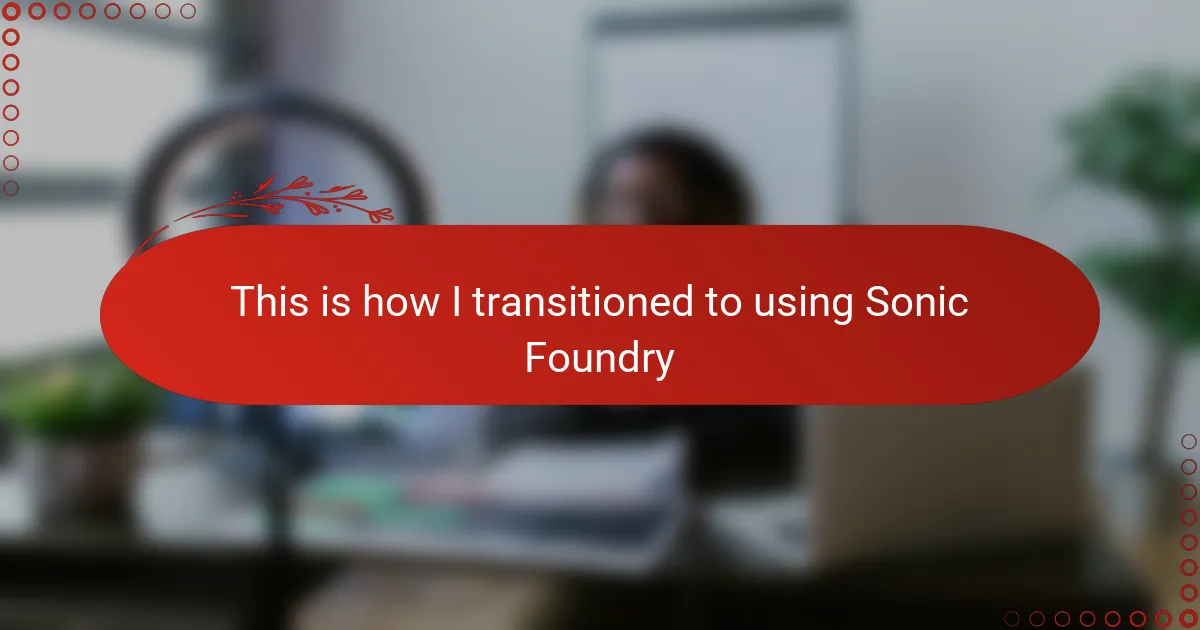Key takeaways
- Sonic Foundry streamlines the radio broadcasting process by integrating editing, uploading, and management in one platform, saving time and enhancing workflow.
- The platform improves audio quality significantly, boosting confidence and professionalism in broadcasts.
- Preparing before transitioning involves training and auditing equipment, emphasizing the need for patience and flexibility to overcome challenges.
- Utilizing features like customizable templates and analytics enhances productivity and audience connection, allowing for more engaging content creation.

Introduction to Sonic Foundry in Radio Broadcasting
When I first heard about Sonic Foundry, I wondered if it was just another software claiming to simplify radio broadcasting. But diving into its tools, I quickly realized how it could transform my workflow and bring new energy to my shows. Have you ever felt stuck juggling multiple programs just to get a single episode ready?
Sonic Foundry integrates so smoothly with radio broadcasting needs that it almost feels like it was made for people like me—content creators who crave both efficiency and quality. Its user-friendly interface took away the usual stress of technical complexities, letting me focus on what truly matters: the story and the sound.
What really struck me was how this platform helped me elevate my broadcasts without overwhelming me with unnecessary features. Sonic Foundry is practical yet powerful, offering a perfect balance that makes every step of the production process clearer and more enjoyable.

Benefits of Sonic Foundry for Broadcasters
One of the biggest benefits I noticed with Sonic Foundry was how much time it saved me. Instead of toggling between different apps to edit, upload, and manage content, everything happened in one place. Have you ever wished for a tool that just gets your rhythm instead of slowing you down? This felt exactly like that.
Another thing that truly impressed me was the audio quality Sonic Foundry delivered out of the box. My broadcasts sounded clearer and more professional, and listeners noticed the difference right away. It’s amazing how the right technology can boost your confidence behind the mic.
Plus, the platform’s analytics gave me insights I didn’t have before. Understanding which segments resonated most with my audience changed how I planned future shows. Have you ever felt like you were guessing what your listeners wanted? Sonic Foundry took away that uncertainty and made me feel connected to my audience in a whole new way.
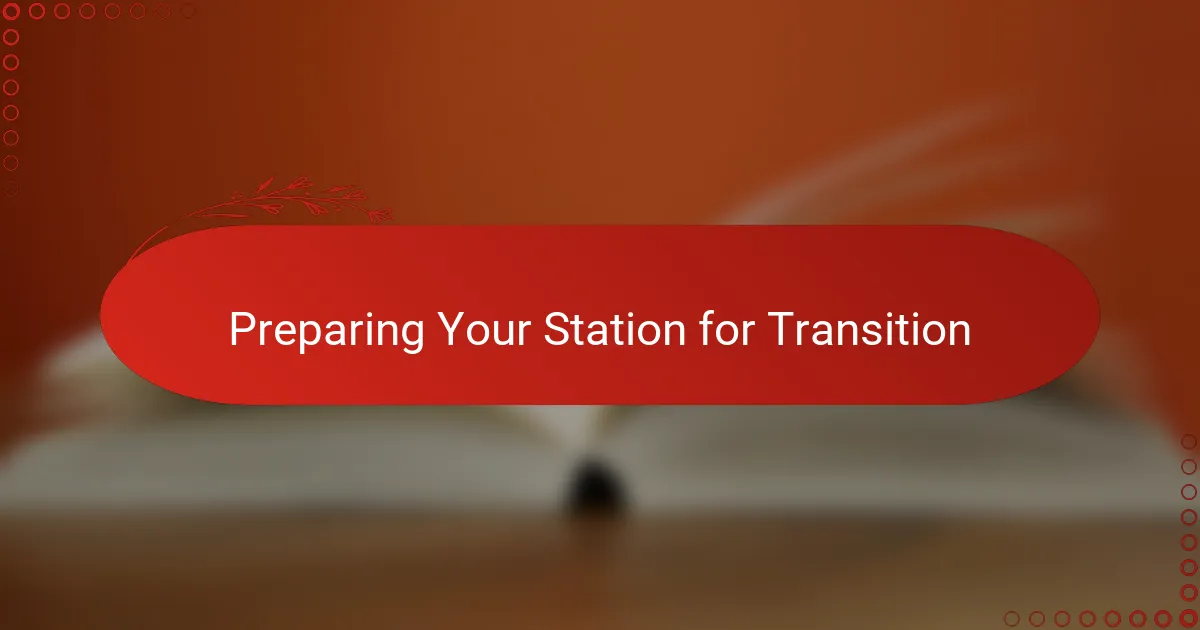
Preparing Your Station for Transition
Before making the switch, I knew preparing my station was crucial—but I underestimated just how much groundwork was involved. Have you ever tried changing your workflow overnight and felt the chaos that followed? I started by auditing all my existing equipment and software to ensure compatibility with Sonic Foundry, which saved me from headaches later on.
Then, I made it a point to train my team ahead of time. Scheduling hands-on sessions allowed everyone to familiarize themselves without the pressure of live broadcasting. I remember how nervous I was at first, but seeing my team gain confidence with the new tools made the whole transition feel less daunting.
Finally, I mapped out a clear timeline for the switch, leaving room for unexpected hiccups. It taught me the value of patience and flexibility in these moments. I asked myself, “What if something goes wrong on launch day?” Preparing for that possibility helped me stay calm and solve problems quickly when they did appear.
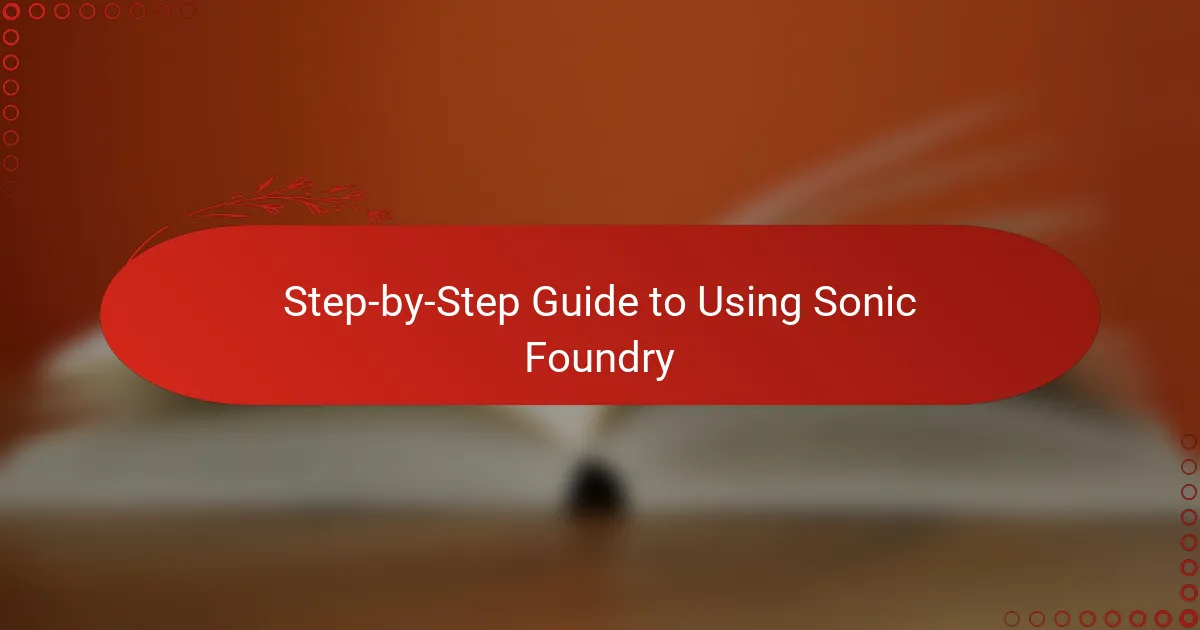
Step-by-Step Guide to Using Sonic Foundry
Getting started with Sonic Foundry was surprisingly straightforward once I committed to a clear step-by-step process. First, I focused on importing my audio files into the platform, which was as simple as dragging and dropping—no complicated menus or hidden commands. Have you ever been intimidated by software that feels like a maze? This wasn’t that at all.
Next, I explored the editing tools, which struck a perfect balance between powerful and easy to use. I remember my first time trimming and adjusting clips without the usual frustration of lag or glitches. The interface guided me intuitively through each step, making the experience almost enjoyable. It felt like I had an assistant rather than a tool.
Finally, the publishing steps wrapped up the process neatly. From scheduling to distribution, everything happened inside Sonic Foundry without hopping between programs. Asking, “How can I streamline this for next time?” helped me customize my workflow within the platform—turning what once felt chaotic into a smooth, repeatable routine.
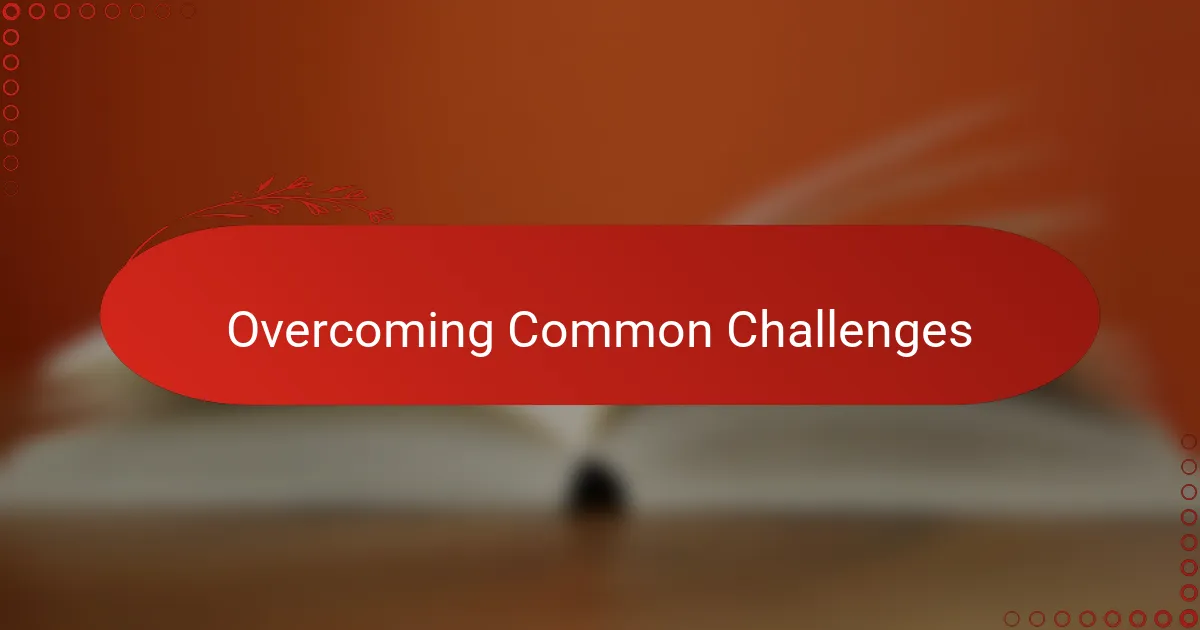
Overcoming Common Challenges
One challenge I faced early on was overcoming the initial learning curve. I remember feeling overwhelmed when all the features suddenly looked like a tangle of options. Have you ever stared at a new platform and wondered if you’d ever get the hang of it? Taking small, deliberate steps and focusing on just one function at a time made all the difference for me.
Another hurdle was adapting my team to the change. Not everyone embraced Sonic Foundry right away—some preferred the old ways. I found that patience and open communication helped ease their concerns. Sharing how the software improved my own workflow made skeptics more willing to give it a genuine shot.
Lastly, I hit a few technical snags with file formats and integrations early in the transition. It was frustrating, no doubt. But reaching out to Sonic Foundry’s support and digging into online forums turned those roadblocks into learning moments. Have you ever felt stuck until you found just the right tip or trick? That’s exactly how I moved past the tough spots and gained new confidence with the system.
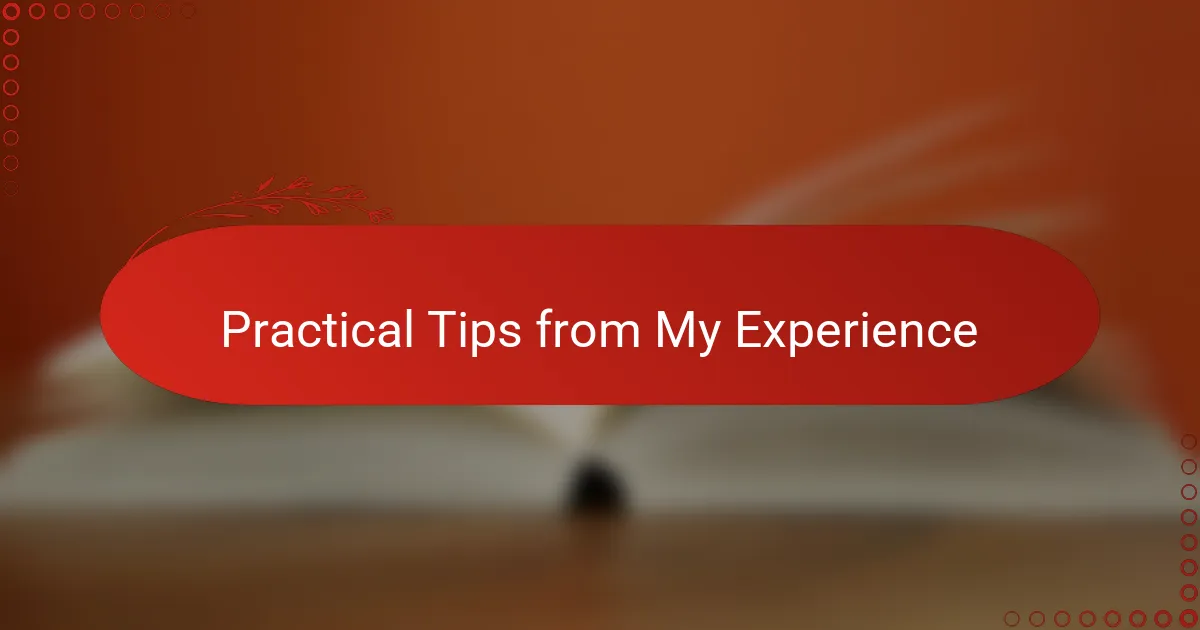
Practical Tips from My Experience
One practical tip that made all the difference for me was setting small, achievable milestones during the initial days of using Sonic Foundry. I asked myself, “What’s one feature I can master today?” Breaking it down like this kept the process manageable and prevented that overwhelming feeling I’d had before.
I also learned the value of customizing the platform early on. Taking time to tailor the workspace to fit my unique style saved me countless hours later. Have you tried adjusting settings to suit your own flow? It’s like tuning an instrument—once it feels right, everything sounds better.
Finally, don’t underestimate the power of routine backups. Early in my transition, I had a moment of panic when a file didn’t save correctly. Luckily, having a consistent backup system in place made recovery smooth and stress-free. This simple habit became my safety net and gave me peace of mind throughout the switch.
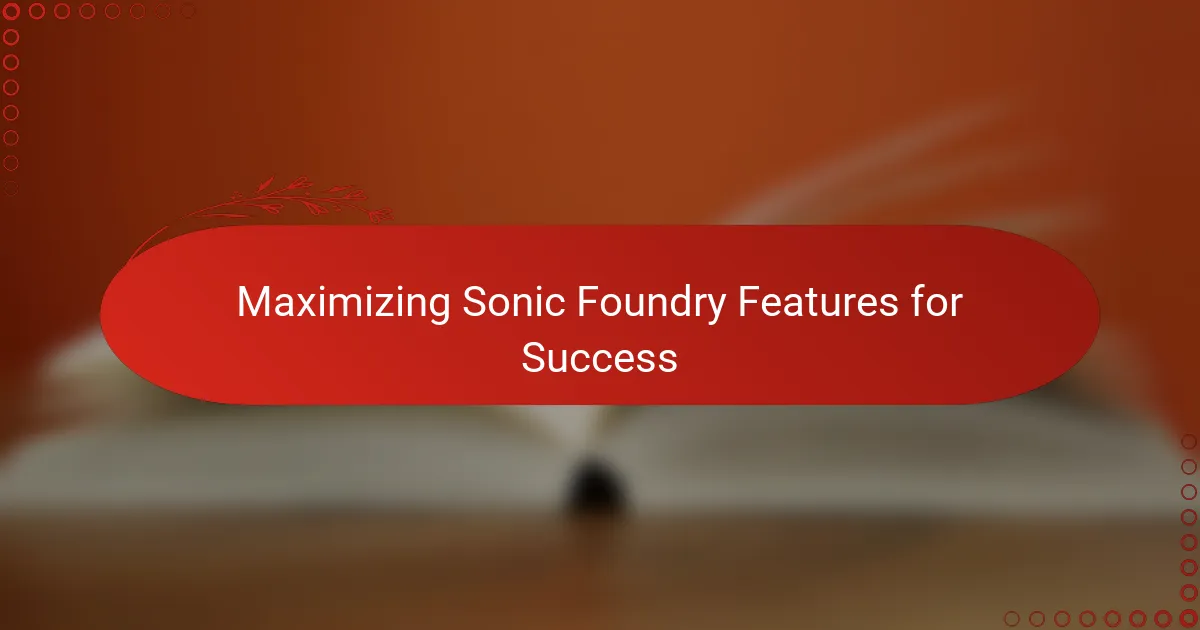
Maximizing Sonic Foundry Features for Success
One feature that really stands out to me is Sonic Foundry’s integrated editing suite. I found myself relying on its precise audio trimming and noise reduction tools more than I expected. Have you ever wasted time toggling between apps just to clean a clip? This all-in-one approach saved me hours and kept my workflow tight.
Another aspect I couldn’t ignore was the platform’s customizable templates. Early on, I tailored them to match the rhythm and style of my shows. That small effort turned into a huge payoff—episodes started flowing faster, and I felt more creative without getting bogged down in repetitive tasks. It was like creating shortcuts that actually made my work feel less like work.
Finally, the analytic feedback tools opened my eyes. Seeing exactly which segments drew listener attention changed how I crafted content. Have you ever guessed what your audience wanted only to find out you were off? Sonic Foundry gave me real data to lean on, making my broadcasts sharper and more engaging every time.
